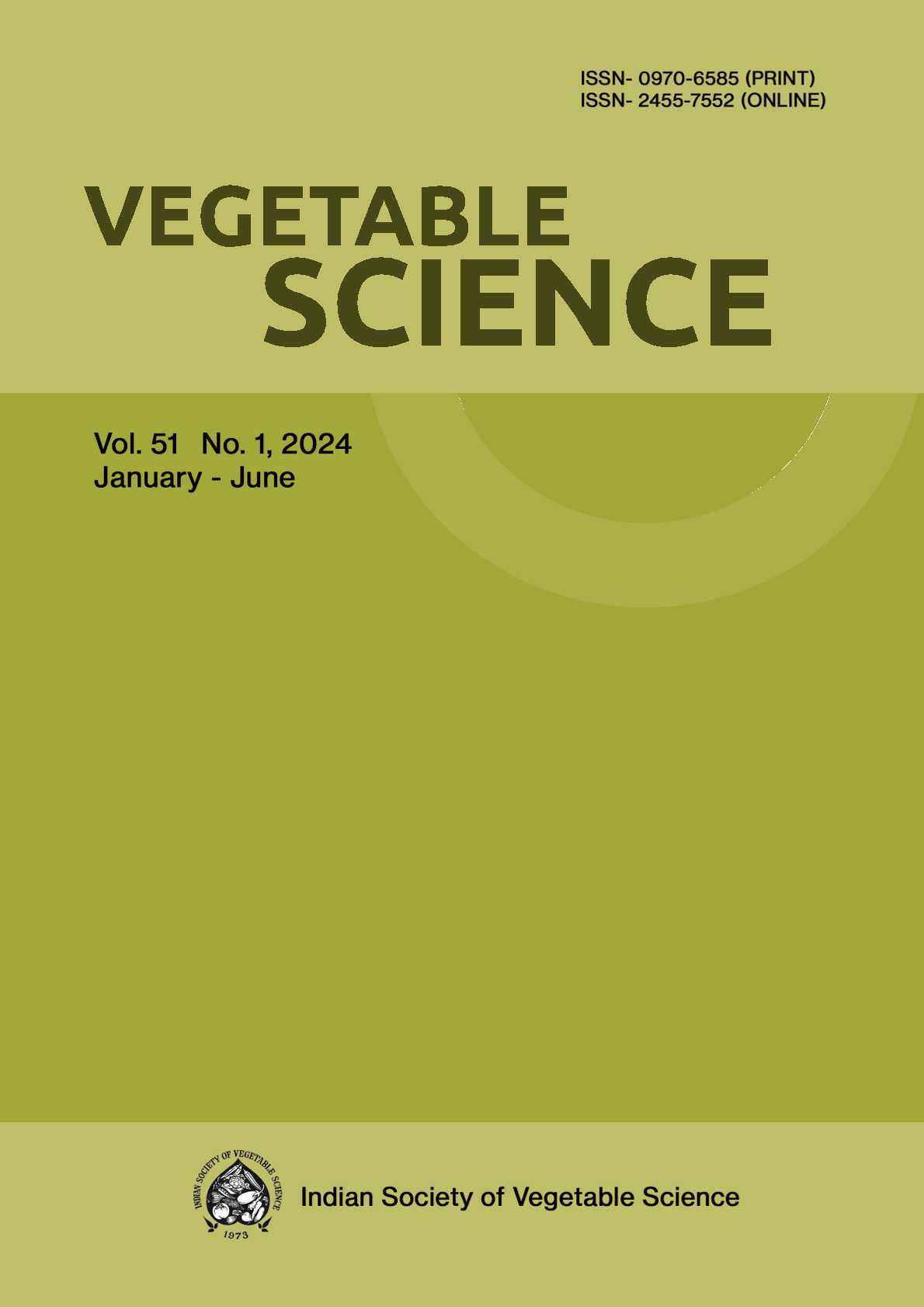Analysis of genetic diversity among Indian garlic (Allium sativum L.) genotypes using SSR markers and morphological traits
DOI:
https://doi.org/10.61180/vegsci.2021.v48.i2.15Keywords:
Indian garlic, genetic diversity, molecular markers, morphological characterization, SSRAbstract
Genetic diversity of seventeen garlic genotypes wwas
evaluated using morphological characters and molecular
markers. Twenty-three morphological characters related to
the foliage and bulb traits of garlic were assessed and
categorized into quantitative and qualitative parameters.
Analysis on the basis of 16 SSR primers was used, out of
which 7 produced clear polymorphic bands in garlic
genotypes and conveniently distinguished all the genotypes
under study. SSR markers used were capable of detecting
42 alleles with an average of 2.63 alleles per locus. The number
of alleles per locus ranged from 1 to 7 and the allelic
polymorphism information content (PIC) value ranged from
0.14 to 0.45 with an average of 0.26. Genetic divergence was
calculated using the Pearson coefficient in which the genetic
similarity varied from 0.04 to 1.0 and on the basis of
morphological traits ranged from 1.65 to 6.12 with an average
of 3.6 which was higher than molecular markers.
Morphological traits are less valid to evaluate genetic
diversity because these traits depend on the environmental
and climatic factors like day length and temperature, as they
are adapted for distinct climatic regions. The study revealed
considerable amount of genetic variability among garlic
genotypes and identified a correlation between molecular
markers and morphological traits. The present study also
indicates that though the microsatellite markers are fast and
high throughput for DNA fingerprinting there is a need for
more markers to be developed to assess genetic diversity
Downloads
Published
Issue
Section
License

This work is licensed under a Creative Commons Attribution-NonCommercial-NoDerivatives 4.0 International License.






